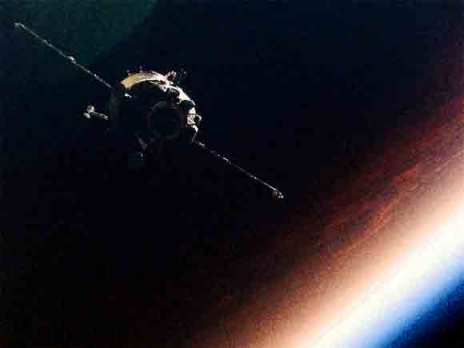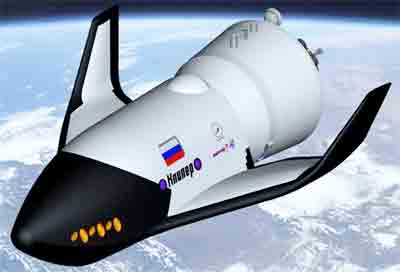Archive for the ‘soyuz’ Tag
A Russian Soyuz rocket launched an unmanned resupply ship to the International Space Station on July 27 to make an express delivery to the orbiting outpost. The vehicle will be delivering food, supplies and the last-minute addition of a repair kit for a U.S. spacesuit that malfunctioned during a spacewalk last week.
The robotic Progress 52 spacecraft and its Soyuz rocket lifted off from the Baikonur Cosmodrome in Kazakhstan.
The cargo ship is loaded with food, fuel, supplies and science experiment equipment for the six-person crew of the station’s Expedition 36 mission.Among its cargo is a set of tools intended to help the astronauts investigate and patch up the spacesuit that malfunctioned during a July 16 spacewalk outside the orbiting laboratory.
That spacewalk was terminated early after just 92 minutes when water began to leak into the helmet of spacewalker Luca Parmitano, an Italian astronaut with the European Space Agency. Parmitano and his fellow spacewalker Chris Cassidy of NASA aborted the excursion, which was intended to perform maintenance work to prepare the space station for the arrival of a new Russian module later this year.
Progress 52’s express trip will bring it to the space in station in just six hours, docking after only four orbits of the planet — a shorter journey that’s been adopted recently to save vehicles time on a trip that used to take multiple days.
The space station is about the size of a five bedroom house with the wingspan of a football field. The $100 billion facility, built by five space agencies representing 15 countries, has been staffed continuously with rotating crews of astronauts since 2000.
The astronauts currently there include NASA’s Karen Nyberg and Chris Cassidy; the European Space Agency’s Luca Parmitano; and Russian’s Fyodor Yurchikhin, Pavel Vinogradov and Alexander Misurkin.
 A Soyuz spacecraft carrying a Russian, an American and a Dutchman to the International Space Station blasted off flawlessly from Russia’s launch facility in Baikonur, Kazakhstan on December 21, 2011.
A Soyuz spacecraft carrying a Russian, an American and a Dutchman to the International Space Station blasted off flawlessly from Russia’s launch facility in Baikonur, Kazakhstan on December 21, 2011.
Mission commander Oleg Kononenko and his colleagues, American Don Pettit and European Space Agency astronaut Andre Kuipers are to dock with the space station on Friday.
The blastoff took place without a hitch and the spacecraft reached Earth orbit about nine minutes later. Video from inside the craft showed the three crew members gripping each others’ hands in celebration as the final stage of the booster rocket separated.
The three aboard the Russian spacecraft will join three others already on the ISS, NASA’s Dan Burbank and Russians Anton Shkaplerov and Anatoly Ivanishin. The six are to work together on the station until March 2012.
 The US will soon be retiring their space shuttles to replace them with a new vehicle, scheduled for 2013. Until then, the Americans will be riding on Russian Soyuz capsules. But the Soyuz itself, a 40 year old technology with many modernizations, is on its way out, to be replaced with bigger better platforms.
The US will soon be retiring their space shuttles to replace them with a new vehicle, scheduled for 2013. Until then, the Americans will be riding on Russian Soyuz capsules. But the Soyuz itself, a 40 year old technology with many modernizations, is on its way out, to be replaced with bigger better platforms.
The replacement for the will be the Kliper, a ship carrying 6 crew and a half ton of cargo. It is scheduled to fly its maiden voyage some time in 2010. The ship is about twice the size of the Soyuz and will require much larger rockets, most likely the Zenit class of booster rockets, in order to make orbit. It will return to earth by extending wings and gliding down, for a soft landing.
Interestingly enough, if things go according to plant, the new, larger Kliper, will actually save money. The present Soyuz missions run between $20 to $30 million each (compared to the American space shuttles at around $300 million each). Kliper flights are supposed to move more equipment and people for less money, but even it the costs stay the same, with more room on the ship, there will be room for more space tourists and at $20 million per pop, the ships will earn a profit, with just one added passenger.
Development of the Kliper is also priced at the low cost of $1 billion, compare that to the $10 billion for the American Crew Exploration Vehicle (CEV), which is still on the drawing board.
But the Kliper is only the first modern step in a new plan by the Russian space agency to conquer the inner sphere of our solar system. Next on the development board is a manned spacecraft powered by a nuclear electric engine. For decades, Russia and the Soviet Union have developed nuclear powered satellites, which did not have to rely upon easily damaged solar arrays, for power. Of course those put out only kilowatts of power, while this ships engines will have to run on the megawatt range.
The ship’s design is scheduled to be complete by 2012 and a finished by 2021, at an estimated cost of 17 billion rubles, or $580 million. More realistic estimates put the price tag at $1 to $1.5 billion, over the next decade.

